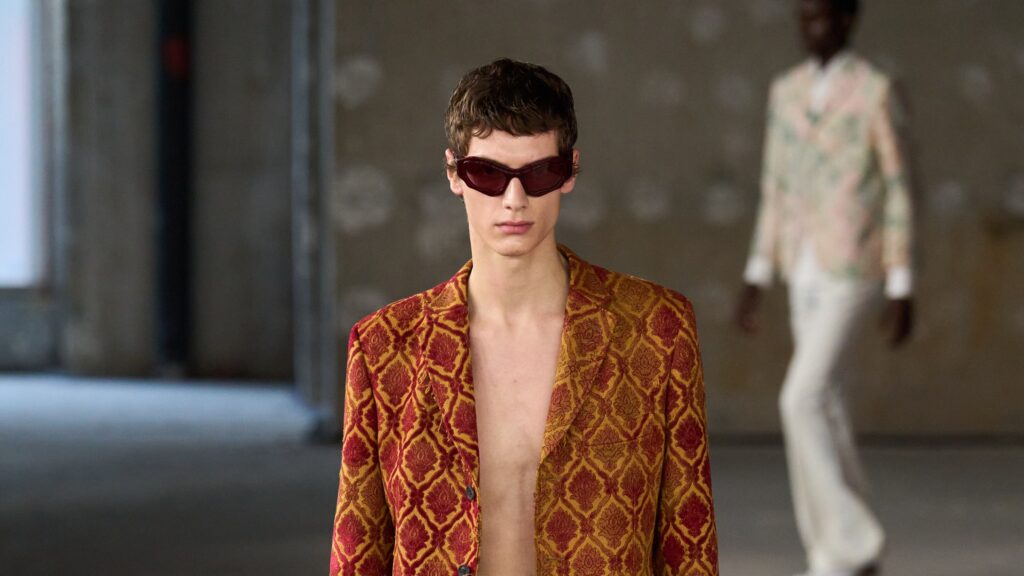“I would wear the **** out of that!” So sighed a fellow showgoer as we shuffled to the door of the Junya Watanabe show. He spoke, I suspect, for almost everyone in the room: this was a collection of brilliant menswear into which was embedded a gentle broader treatise on taste, history, and enlightenment. Who wouldn’t want to wear it?
The subject of that lesson was the back-and-forth between classicism and radicalism as the driver of cultural evolution. In his opening looks Watanabe leaned to the former, opening with a classical piano soundtrack and a series of tailored jackets cut in faux-vintage brocades and jacquards that spanned rococo, baroque, and romanesque. A suit looked to be cut in a jacquard reproduction of a Latin illuminated manuscript. The jackets (which made me think of Kean Etro) were worn over kicky denim and then olive drab, and then orange drill. Under a fleur de lys jacket there was a pair of straight-cut cropped jeans patched with a collage of the jacket fabrics we’d just seen (which made me think of Dolce) worn sockless over oxfords.
It was about now that the tinkling piano began to loop, tinkle, and splinter like glassware during an earthquake. Over it rumbled a mix of St. Germain’s “Rose Rouge,” one of Ludovic Navarre’s epic and original intersections of house and jazz. From here on in the previous harmonies and proportions established in the looks also began to splinter and mash into new forms. There was mod check tailoring, and a grungy new wave look of black skinny formal tailoring worn in disarray (which made me think of Hedi Slimane). There were some classically formal-casual looks of gabardine outerwear over pleated dress pants, before the gabardine deck jackets came fused with a coated leather bomber.
A twisted look of askew-seamed shirting and drapey pants (that made me think of Westwood) followed by another with three overtied ties. Shorts over wide black denim came conjoined with a wide sash wreathing of souvenir silk scarfs and a bandana. We saw some art: Munch’s portrait of anarchist philosopher Hans Jaeger on a long tee above denim wrapped in a sarong of fringed silk paisley. An album-cover-esque Elizabeth Peyton was printed on a button-down above a semi-deconstructed jean. There was knitwear patterned after naive architectural archetypes.
Then we switched to more informal outerwear shapes patterned with jacquards of centers of thought; a Florence rooftop workwear suit, a Bruges monastery jacket, a Venice Grand Canal coat, a Ponte Vecchio denim work jacket. As the St. Germain built and built, Watanabe presented a series of non-sartorial classics in the same fabrics with which he had previously presented the tailoring; my personal favorite was the long maroon baroque floral workwear coat labeled Lee. “Our way of originality. A new feeling for basics,” read the notes. More about contemplation than innovation, this collection was entirely original in that it considered origins and the oppositions through which they evolve down the generations.


